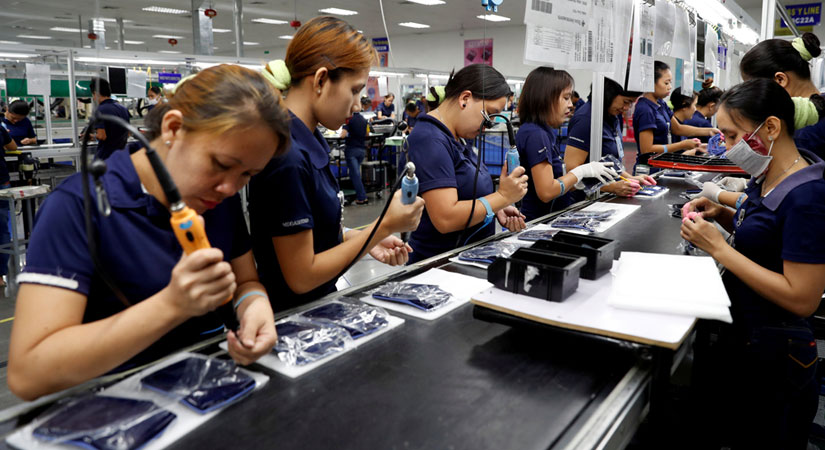Nationwide round-up
Jeepney drivers ask High Court to void transport suspension policies
A GROUP of jeepney drivers asked the Supreme Court to nullify several transport policies that suspended their operations during the lockdown due to the coronavirus pandemic. In its 65-page petition, members and officials of the National Confederation of Transport Workers Union questioned before the Supreme Court the issuances of the Land Transportation Franchise and Regulatory Board (LTFRB), Department of Transportation, and the inter-agency task force (IATF) handling the pandemic response. They asked the court to conduct oral arguments on the lawsuit. The respondents are Health Secretary and IATF chairperson Francisco T. Duque III, Cabinet Secretary and IATF co-chair Karlo Alexei B. Nograles, LTFRB Chairperson Martin B. Delgra; and Transport Secretary Arthur P. Tugade. The union said the government officials “arbitrarily and unreasonably confiscated” their right to work, and failed to establish the connection between the prohibition and mitigation of the effects of the outbreak. They also questioned the agencies’ authority to issue the questioned policies. The lockdown, which suspended all public transport operations, was imposed mid-March. Modernized public utility jeepneys were allowed to resume operations on June 22 while traditional jeepneys on June 28. “Clearly, this is a form of discrimination against traditional jeepneys without establishing sufficient distinction among the other PUVs (public utility vehicles) mentioned,” the petitioners said. — Vann Marlo M. Villegas
Duterte asks telecom firms to ‘do a better job’
PRESIDENT RODRIGO R. Duterte called on telecommunication companies to “do a better job” in delivering internet services given the higher demand for digital connectivity amid the coronavirus crisis. “May I just appeal to these telecommunications, can you do a better job?” He said in his Monday night address. Mr. Duterte previously lashed out at telecommunication firms for the country’s poor connection, which is among the slowest and most expensive in the world. Companies, on the other hand, pointed to government red tape for the slow expansion of infrastructure such as setting up cell towers. The President has since softened his tone and recently ordered local government units to improve the ease of doing business. “Let the telcos do their job, allow them to build the structures, towers if you may, so they can allow this,” he said. — Gillian M. Cortez
BuCor told to explain delay in medicine procurement for inmates
JUSTICE SECRETARY Menardo I. Guevarra is awaiting the Bureau of Corrections’ (BuCor) explanation on the delay of medicine procurement for prisoners in 2019 that was flagged by state auditors. “I will certainly look into this,” Mr. Guevarra told reporters in a Viber message. “I’ll wait for the BuCor explanation.” The Commission on Audit (CoA) reported that BuCor’s procurement process exceeded the maximum allowable time of three months. CoA said prisoners “were deprived of the much needed medical care due to long procurement processing of drugs and medicines requirement” of the New Bilibid Prison Hospital, Correctional Institute for Women, and Reception and Diagnostic Center. “It should be noted that medical care for PDLs (persons deprived of liberty) as part of the mandate of the Bureau requires the effective and efficient safekeeping of the inmates,” CoA said. BuCor cited the “GCTA (Good Conduct Time Allowance) fiasco” as the reason why medicine projects were not prioritized, according to CoA. The GCTA controversy in 2019 was prompted by news on the early release of convicted rapist and murderer Antonio Sanchez due supposedly to good conduct. In the same year, the prison chief was sacked over the illegal release of heinous crimes convicts and was replaced by Gerald Q. Bantag. — Vann Marlo M. Villegas
UP-OCTA Research team cautions vs industries’ return to 100% capacity operations
THE UNIVERSITY of the Philippines (UP)-OCTA Research team cautioned against allowing industries to return to operations at 100% capacity, saying the country’s coronavirus outbreak is not yet under a manageable level. “The curve is only beginning to flatten… but still not in the ideal to release restrictions,” UP-OCTA researcher Butch Ong said in a Malacañang briefing Tuesday. He explained that while the curve — determined by the hospital utilization rate versus the number of positive cases — is improving, there is still a high probability for a sudden increase. “Now that we see that the hospital utilization rate is going down already, our curve in a way is flattened… but it can still increase at any time,” Mr. Ong said. He added that the only way the curve can be controlled is maintaining a reproduction rate of around 0.5. The country’s reproduction rate is at 0.7. Mr. Ong said the suggestion of Trade Secretary Ramon M. Lopez to allow some industries to operate at 100% capacity should be accompanied by strict health protocols. “If the minimal health standards cannot be guaranteed, then we should not be at 100%,” he said. — Gillian M. Cortez
Duterte is not resigning, his spokesperson says
PRESIDENT RODRIGO R. Duterte will carry on with his term until 2022, according to his spokesperson, despite the country’s leader saying he has offered to resign after expressing frustration over corruption. “I offered to resign as President… kasi nagsasawa na ako (because I am sick of it),” Mr. Duterte said in a Monday night televised talk. On Tuesday, Palace Spokesperson Harry L. Roque said during his daily briefing, “Mukhang hindi naman dahil gagamitin nga niya iyong natitira niyang dalawang taon para linisin ang gobyerno (It looks like he will not because he will use the remaining two years to clean the government).” Mr. Duterte also said on Monday that he will ask Congress to help fight corruption. He previously called on lawmakers to create oversight committees to help address anomalies in government. — Gillian M. Cortez


